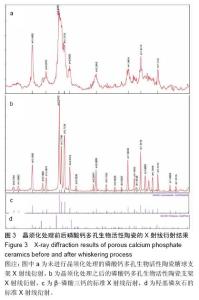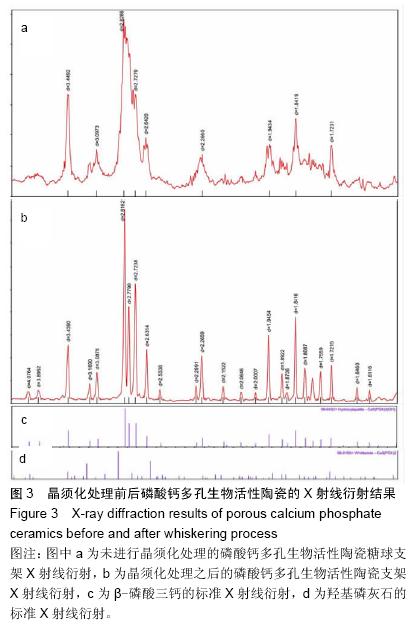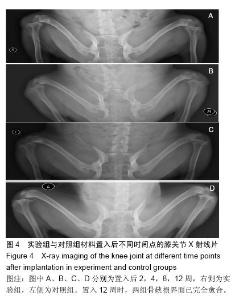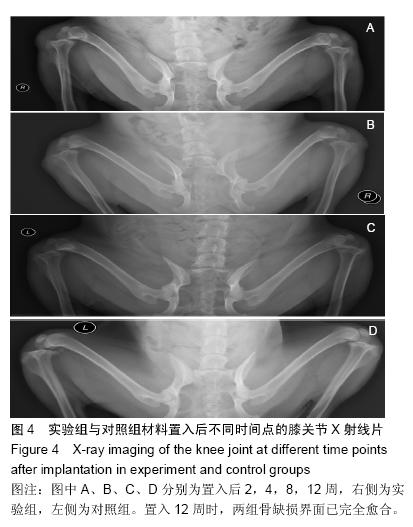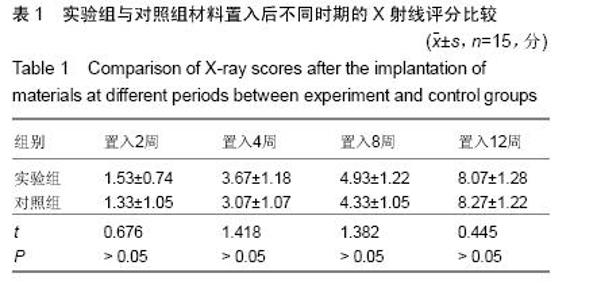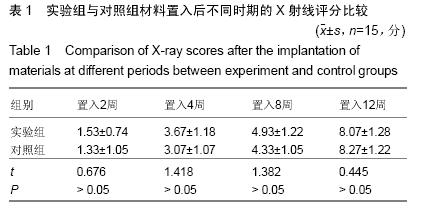[1] Balakumar B,Babu S,Varma HK,et al.Triphasic ceramic scaffold in paediatric and adolescent bone defects.J Pediatr Orthop B.2014;23(2):187-195.
[2] Zhang X,Zhu L,Lv H,et al.Repair of rabbit femoral condyle bone defects with injectable nanohydroxyapatite/chitosan composites.J Mater Sci Mater Med.2012;23(8):1941-1949.
[3] Wu X,Miao L,Yao Y,et al. Electrospun fibrous scaffolds combined with nanoscale hydroxyapatite induce osteogenic differentiation of human periodontal ligament cells.Int J Nanomedicine.2014;9:4135-4143.
[4] Gamblin AL, Brennan MA, Renaud A,et al. Bone tissue formation with human mesenchymal stem cells and biphasic calcium phosphate ceramics: the local implication of osteoclasts and macrophages. Biomaterials. 2014;15 (36): 9660-9667
[5] Zhang C,Wang J,Feng H,et al.Replacement of segmental bone defects using porous bioceramic cylinders: a biomechanical and X-ray diffraction study.J Biomed Mater Res. 2001;54(3):407-411.
[6] Qi-hua X,Chen Z,Jian-gang Z,et al.Comparison of contrast-enhanced ultrasonography and contrast-enhanced MRI for the assessment of vascularization of hydroxyapatite orbital implants.Clin Imaging.2014;38(5):616-620.
[7] Koc A,Finkenzeller G,Elin AE,et al. Evaluation of adenoviral vascular endothelial growth factor-activated chitosan/hydroxyapatite scaffold for engineering vascularized bone tissue using human osteoblasts: In vitro and in vivo studies.J Biomater Appl. 2014;29(5):748-760.
[8] Badr-Mohammadi MR,Hesaraki S,Zamanian A.Mechanical properties and in vitro cellular behavior of zinc-containing nano-bioactive glass doped biphasic calcium phosphate bone substitutes.J Mater Sci Mater Med.2014;25(1):185-197.
[9] 王欣宇,焦国豪,李世普,等.生物复合陶瓷材料CaSiO3+B2O3+ SrCO3+CaF2+ZnO/HA的制备及性能[J].稀有金属材料与工程, 2008,37(9):1633-1636.
[10] 张翔,李玉宝,左奕,等.加工工艺对n-HA/PA66复合材料结晶行为和力学性能的影响[J].复合材料学报,2007,24(3):72-77.
[11] Ye X,Zhou C,Xiao Z,et al.Fabrication and characterization of porous 3D whisker-covered calcium phosphate scaffolds. Mater Lett.2014;128:179-182.
[12] 贾治彬,智伟,李金雨,等.羟基磷灰石基多孔复合支架的制备及其表征[J].功能材料,2014,45(18):18129-18134.
[13] Campana V,Milano G,Pagano E, et al.Bone substitutes in orthopaedic surgery: from basic science to clinical practice.J Mater Sci Mater Med.2014;25(10):2445-2461.
[14] 檀臻炜,姚一民,娄延举,等.锁定钢板结合BAM人工骨治疗胫骨平台粉碎性骨折[J].中国骨与关节损伤杂志, 2012, 27 (10): 940-941.
[15] Gejo R,Akizuki S,Takizawa T.Fixation of the NexGen HA-TCP-coated cementless, screwless total knee arthroplasty: comparison with conventional cementless total knee arthroplasty of the same type.J Arthroplasty. 2002; 17 (4):449-456.
[16] Chao DL,Harbour JW. Hydroxyapatite versus polyethylene orbital implants for patients undergoing enucleation for uveal melanoma.Can J Ophthalmol.2015;50(2):151-154.
[17] 张爱娟,高增丽,王卫伟,等.有机泡沫浸渍法制备多孔羟基磷灰石生物支架的研究[J].山东大学学报:工学版, 2012, 42(3):105- 109,114.
[18] 黄鹏.大节段羟基磷灰石陶瓷颗粒堆积多孔支架体内异位成骨实验研究[D].西南交通大学,2009.
[19] 郭来阳,张靖微,赵婧,等.具有良好贯通性的颗粒造孔支架的制备及表征[J].无机材料学报,2011,26(1):17-21.
[20] Cho JS,Ko YN,Koo HY,et al.Synthesis of nano-sized biphasic calcium phosphate ceramics with spherical shape by flame spray pyrolysis.J Mater Sci Mater Med. 2010; 21(4):1143-1149.
[21] 刘朝红,董寅生,林萍华,等.β-磷酸钙多孔生物陶瓷支架的制备及生物相容性[J].东南大学学报:自然科学版, 2004, 34 (5): 665-668.
[22] MacMillan AK,Lamberti FV,Moulton JN,et al. Similar healthy osteoclast and osteoblast activity on nanocrystalline hydroxyapatite and nanoparticles of tri-calcium phosphate.Int J Nanomedicine.2014;9: 5627-5637.
[23] Choy J,Albers CE,Siebenrock KA,et al.Incorporation of RANKL promotes osteoclast formation and osteoclast activity on β-TCP ceramics.Bone.2014;69:80-88.
[24] Bernhardt A,Dittrich R,Lode A,et al.Nanocrystalline spherical hydroxyapatite granules for bone repair: in vitro evaluation with osteoblast-like cells and osteoclasts.J Mater Sci Mater Med.2013;24(7):1755-1766.
[25] Udagawa N,Takahashi N,Jimi E,et al.Osteoblasts/stromal cells stimulate osteoclast activation through expression of osteoclast differentiation factor/RANKL but not macrophage colony-stimulating factor: receptor activator of NF-kappa B ligand.Bone.1999;25(5):517-523.
[26] Banava S,Houshyari M,Safaie T.The effect of casein phosphopeptide amorphous calcium phosphate fluoride paste (CPP-ACPF) on oral and salivary conditions of patients undergoing chemotherapy: A randomized controlled clinical trial.Electron Physician. 2015;7(7):1535-1541.
[27] Xie Y,Rustom LE,McDermott AM,et al.Net shape fabrication of calcium phosphate scaffolds with multiple material domains.Biofabrication. 2016;8(1):015005.
[28] AbdulQader ST,Rahman IA,Thirumulu KP,et al.Effect of biphasic calcium phosphate scaffold porosities on odontogenic differentiation of human dental pulp cells.J Biomater Appl.2016.pii: 0885328215625759.[Epub ahead of print]
[29] Bolander J,Ji W,Geris L,et al.The combined mechanism of bone morphogenetic protein- and calcium phosphate-induced skeletal tissue formation by human periosteum derived cells. Eur Cell Mater.2016;30:11-25.
[30] Kovar FM,Endler G,Wagner OF,et al.Basal elevated serum calcium phosphate product as an independent risk factor for mortality in patients with fractures of the proximal femur-A 20 year observation study.Injury.2015.pii: S0020 -1383 (15) 00756-1.
[31] Zhang HX,Zhang XP,Xiao GY,et al.In vitro and in vivo evaluation of calcium phosphate composite scaffolds containing BMP-VEGF loaded PLGA microspheres for the treatment of avascular necrosis of the femoral head.Mater Sci Eng C Mater Biol Appl.2016;60:298-307.
[32] Zheng J,Xiao Y,Gong T,et al.Fabrication and characterization of a novel carbon fiber-reinforced calcium phosphate silicate bone cement with potential osteo-inductivity.Biomed Mater. 2015;11(1):015003.
[33] Frede A,Neuhaus B,Klopfleisch R,et al.Colonic gene silencing using siRNA-loaded calcium phosphate/PLGA nanoparticles ameliorates intestinal inflammation in vivo.J Control Release. 2015;222:86-96.
[34] Wen B,Li Z,Nie R,et al.Influence of biphasic calcium phosphate surfaces coated with Enamel Matrix Derivative on vertical bone growth in an extra-oral rabbit model.Clin Oral Implants Res. 2015.doi: 10.1111/clr.12740.[Epub ahead of print]
